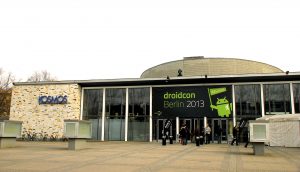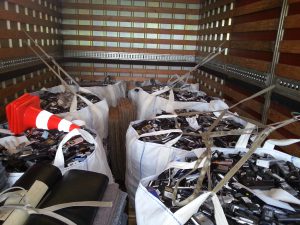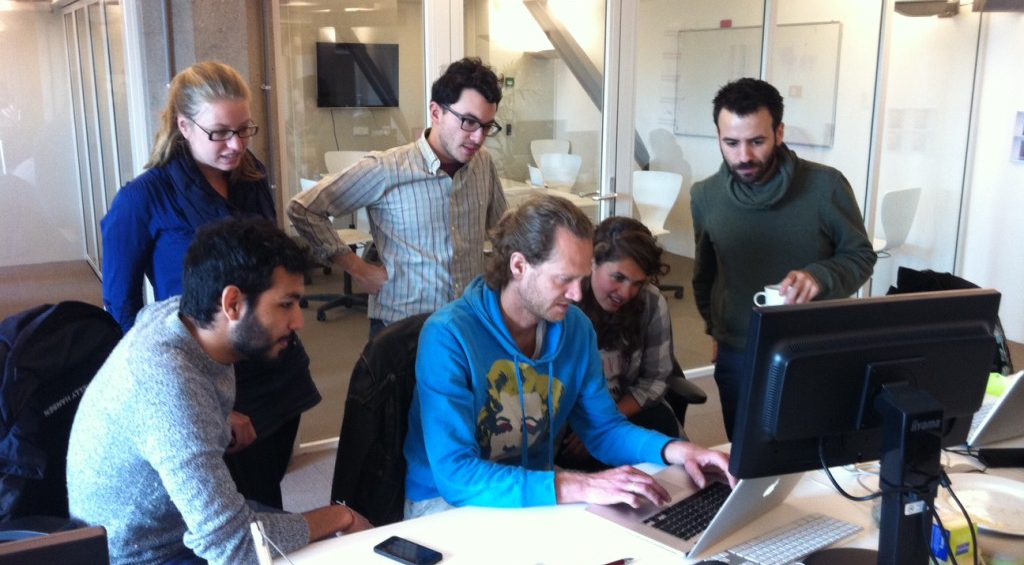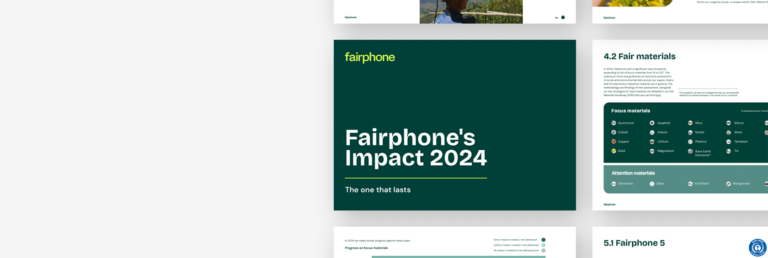Three Years in the Making: Road to a Fairer Phone
Three years ago, we started Fairphone as a campaign with a simple but lofty goal: to create the world’s first completely fair smartphone. This year’s phone is the first step towards this goal.
From the beginning, we knew it was unlikely that the first edition of Fairphone would be truly, 100% fair. But we didn’t let that discourage us from taking action and thinking big. Even if we couldn’t achieve perfection with our first attempt, we knew we could try and do better than the status quo and help hold the entire industry to a higher standard.
Thanks to our core team, amazing partners, and huge network of like-minded enthusiasts, we’re poised to officially launch pre-orders of the very first Fairphone in the coming week.
While the phone is not yet as fair as we aspire to make it, we’ve made a significant number of interventions in the supply chain to create a smartphone that puts people and social values first. It is made with care, contains a number of precious materials, leverages smart design to create lasting value and offers clear deals to suppliers, workers, producers, and consumers.
Our seriously cool smartphone is so much more than just a phone. Here are a few of our achievements to date, including elements that make our first phone fairer and puts the “smart” in smartphone.
Every smartphone is filled with an array of metals and precious materials. To improve transparency and industry standards, we’ve started by sourcing some of our minerals as conflict-free from Congo.
 We’ve joined a supply chain in the Democratic Republic of Congo (DRC) that guarantees these minerals don’t fund illegal armed forces. The soldering paste we will use contains conflict-free tin from mines located in the South Kivu province. The conflict-free tantalum in our capacitors is extracted from coltan sourced from the Mai Baridi, Kisengo, and Luba mines, located in the northern part of the Katanga province. By focusing on a single region, we can formalize the mining sector, increase employment for small-scale miners, and contribute to regional stability.
We’ve joined a supply chain in the Democratic Republic of Congo (DRC) that guarantees these minerals don’t fund illegal armed forces. The soldering paste we will use contains conflict-free tin from mines located in the South Kivu province. The conflict-free tantalum in our capacitors is extracted from coltan sourced from the Mai Baridi, Kisengo, and Luba mines, located in the northern part of the Katanga province. By focusing on a single region, we can formalize the mining sector, increase employment for small-scale miners, and contribute to regional stability.
We’ve joined the Conflict-Free Tin Initiative and the Solutions for Hope Project which certify the conflict-free status of the tin and coltan (tantalum) that go into our smartphones – all the way from mines to end user.
Our end goal is to have transparent, long-term relationships with suppliers to ensure good working conditions, environmental protection, and safe recycling practices. There are many challenges to overcome, so we’re taking a realistic approach, one step at a time. Besides undertaking assessments of working conditions with their known limitations, we are in talks to create a worker welfare fund. The fund will bring together workers and management and give them a say in how to resolve issues revealed by the audits, for example working on issues of living conditions, wages, and education.
Open, responsible design is our guiding principle. For our first phone, we’ve focused on design that considers its full life cycle and gives you complete control over how to use and configure it. Our adopted manifesto is “If you can’t open it, you don’t own it.” Here are a few ways we’ve applied smart, open design to our first smartphone:
- Users can choose their preferred operating system. (Advanced users only! The standard OS is Android 4.2, Jelly Bean)
- Batteries are removable & replaceable
- Dual SIM capability
- Minimal packaging
- Chargers & accessories are NOT included by default, in order to reduce waste.
- Easi(er) to open up and repair.
 Our partner Kwamecorp created the uncluttered, user-friendly Android OS interface. A social enterprise itself, Kwame’s design includes fun, informative extras like energy-consumption indicators and an option to switch off notifications and give yourself a break.
Our partner Kwamecorp created the uncluttered, user-friendly Android OS interface. A social enterprise itself, Kwame’s design includes fun, informative extras like energy-consumption indicators and an option to switch off notifications and give yourself a break.
Our ultimate goal is to build a smartphone that offers clear, fair deals to everyone involved. To start, we’re improving transparency by offering a price breakdown to ensure our consumers understand where their money is going and what it supports.
We’re publishing a Bill of Materials and list of suppliers as complete as possible to show where the phone’s components come from. We’re committed to being open and honest about the supply chain, including the elements we’ve not yet been able to change and challenges we find along the way.
Finally, we’re offering honest pricing. The phone’s price (€325) reflects the actual cost of each step, including materials and labor. In order to show the phone’s true value, we are not offering any marketing discounts.
We want to address the phone’s full lifespan, from use and reuse to recycling.
 First and foremost, we’re building a stable, high-performance phone that lets you get the most out of your device – now and for years to come. But no mobile phone lasts forever, so we’re immediately tackling the end of its life as well. For every Fairphone sold, 3 euros goes to Closing the Loop. The money provided by Fairphone and the selling of its first batch will help this foundation remove 100,000 used phones and batteries from Ghana and ensure that they are shipped and safely recycled in Belgium.
First and foremost, we’re building a stable, high-performance phone that lets you get the most out of your device – now and for years to come. But no mobile phone lasts forever, so we’re immediately tackling the end of its life as well. For every Fairphone sold, 3 euros goes to Closing the Loop. The money provided by Fairphone and the selling of its first batch will help this foundation remove 100,000 used phones and batteries from Ghana and ensure that they are shipped and safely recycled in Belgium.
What happens next?
Besides the fair, social and design aspects mentioned above, our first phone is packed with high-performance features and functionality. View the list of technical specifications we’ve released so far.
Our subscriber list has already got a sneak peek, but we will soon launch with a brand new website next Tuesday, May 21!
It’s already been a long journey, and with every step I get closer to understanding the complexity of the economic and political system needed to produce a phone and start to better understand my stuff. This is essential to take action and it is exhilarating to finally come to the moment where our mission has produced an actual phone. We have a long way to go. But gradually, our vision is becoming a concrete reality.
We’re almost ready to start our pre-sales. Keep your eyes open for our pre-order announcement in the coming week to find out more about the first edition of Fairphone.



